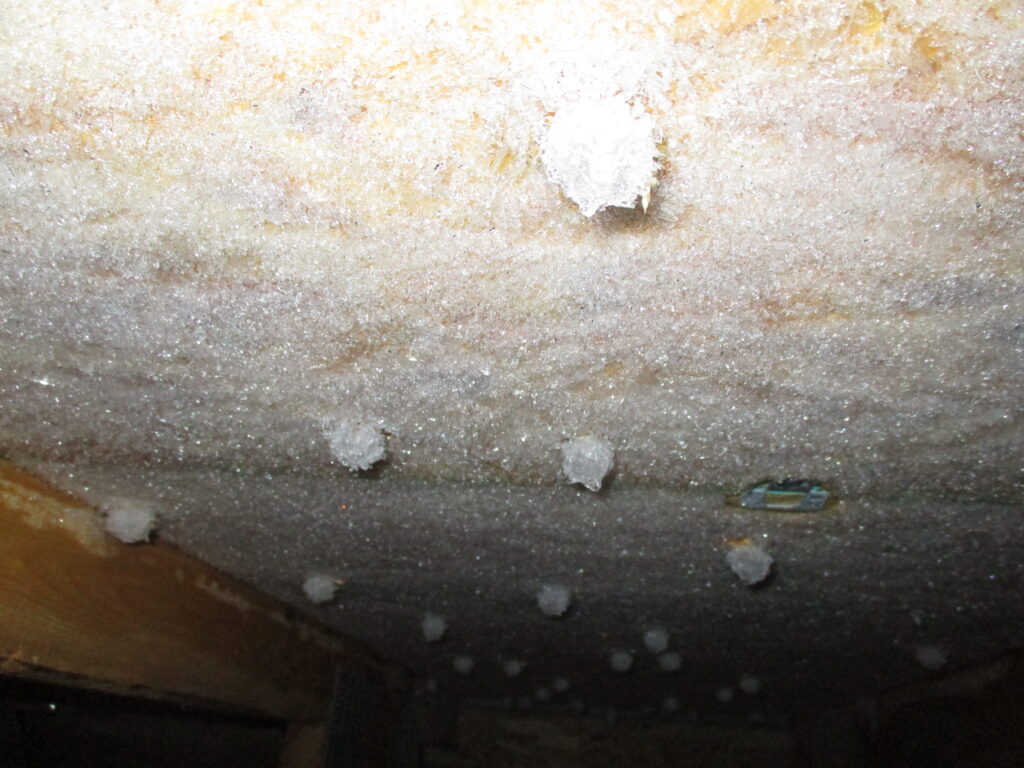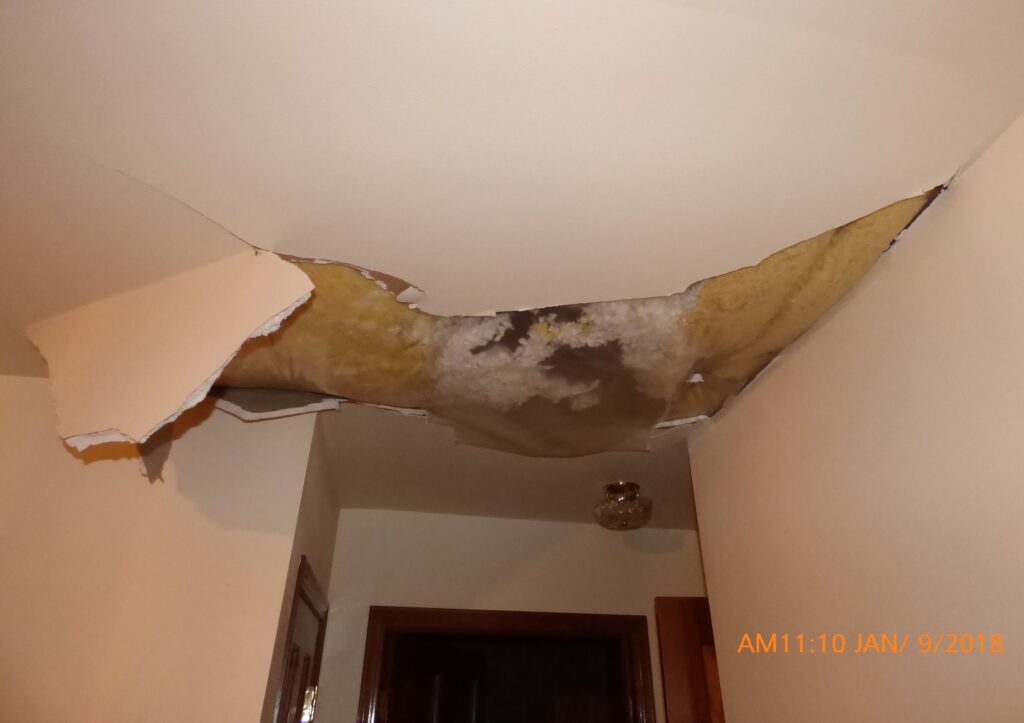By Tom Feiza, Mr. Fix-It, Inc.

Many home inspectors in cold climates have seen signs of moisture and condensation in an attic. These include water stains on roof framing and the roof deck, and organic substances or other materials creating black stains. But have you ever seen “rain” in an attic?
I’m not talking about a roof leak. I mean excessive ice and frost that suddenly melts during a thaw to create what seems like rain in the attic. During the winter of 2017-18, Wisconsin experienced a two-week cold spell with temperatures at 0 degrees Fahrenheit. Then, one weekend, temperatures quickly warmed to 55 degrees and stayed there for several days. I’m a moisture consultant, and my phone rang and rang with calls from homeowners: “Water is leaking into my home!”
I fielded these calls and investigated several serious incidents. Each of them involved excessive air leaks into the attic from heated sections of the home. The leaks carried warm air and lots of moisture into the attic (photo: Ice on Attic Roof Deck). Since the attic temperature was below freezing (and below the dew point), moisture turned to ice on the roof deck and framing. When the outdoors warmed to 55 degrees, this ice melted, and it “rained” in the attic.

Water Is Weighty
One large condominium complex had quite an interesting situation – although “interesting” probably wasn’t how the owners viewed it (photo: Ceiling Collapse, Water Above). These ranch condos had leaks into overhangs, bath fans, range hoods and skylights. One area of ceiling below improperly vented fan ducts was so wet that it collapsed. Water had collected on the plastic vapor barrier because of improper venting of bath fans, dryers, and ranges. The condos also lacked proper attic ventilation.

One brand new $600,000 condo had leaks so severe that they soaked ceilings, opened drywall joints, rained out of light fixtures, and shorted out the garage door operator. In this case, excessive use of ICAT (insulation contact air sealed) can lights was the likely culprit, along with a lack of attic ventilation. The can light, properly installed with a gasket to the drywall, still had a large visible gap around the fixture (photo: Can Light Air Leaks). “Sealed” can lights are not really sealed – notice how light shines through the gap around the fixture.

Lessons Learned?
During your inspection, always report signs of moisture that, in your professional judgment, are significantly deficient. This would include excessive stains, organic growth, improper fan venting and improper attic venting. You don’t need to determine a fix – just recommend further evaluation.

